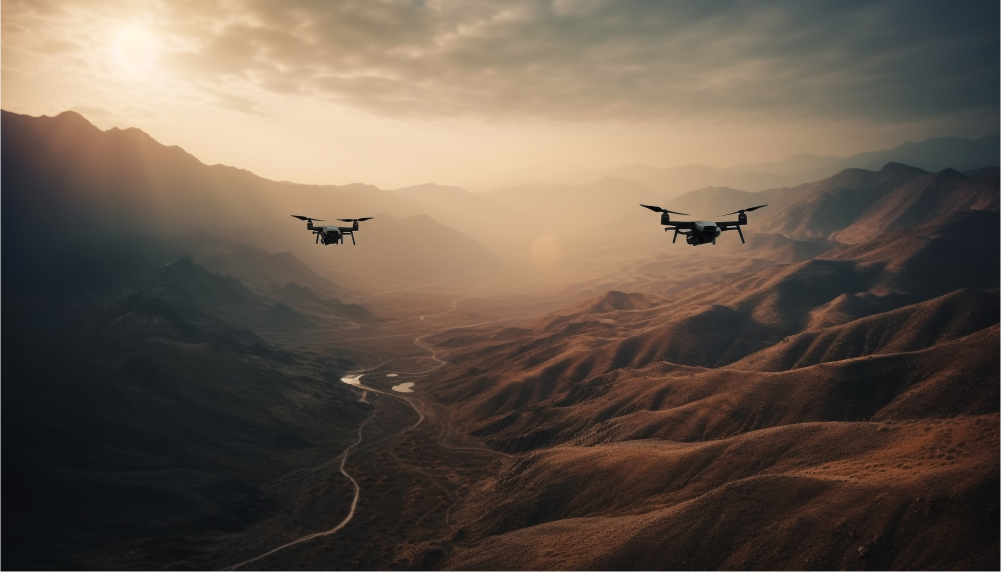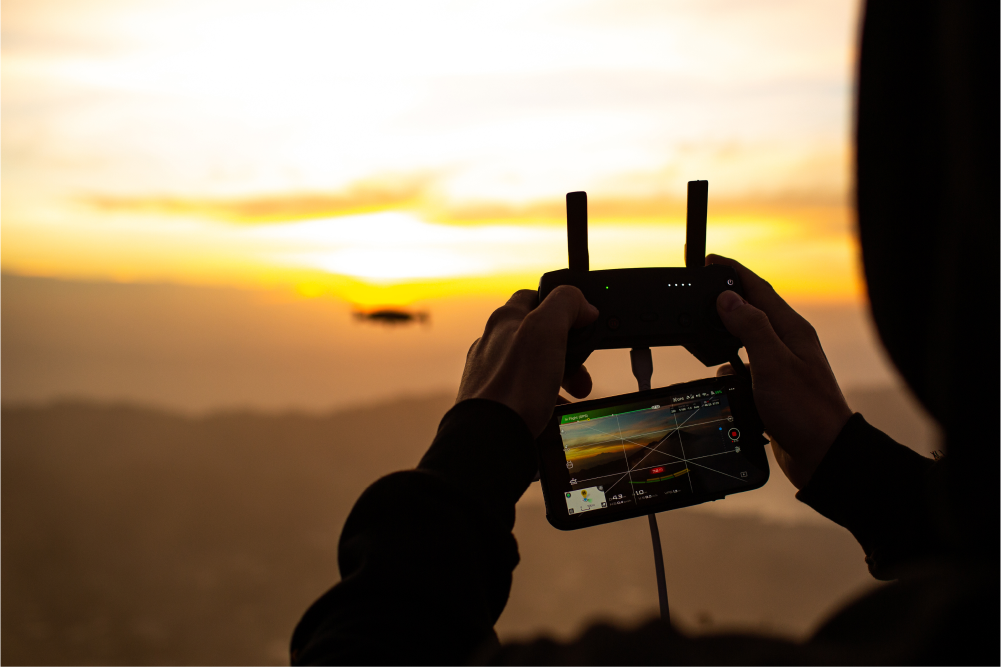Drones and the Future: Beyond Photography and Deliveries
Drones play a transformative role in agriculture, particularly in advancing precision farming techniques. Technology and drones are already improving our lives, e.g., people actively use e-books, smart homes, and team management apps. Farmers can now monitor crop health with unprecedented detail and efficiency by equipping drones with advanced sensors and imaging technologies. These aerial devices can swiftly cover large areas, capturing high-resolution images that reveal a wealth of crop information. This includes identifying areas affected by diseases, nutrient deficiencies, or insufficient water supply. By providing such granular insights, drones enable farmers to respond promptly and precisely to specific areas of concern rather than treating entire fields uniformly.
In addition to crop monitoring, drones are revolutionizing agriculture’s irrigation management and pest control. With thermal and multispectral imaging capabilities, drones can assess moisture levels across different parts of a field, enabling farmers to optimize their irrigation systems for more effective water use. This is particularly crucial in regions facing water scarcity. Regarding pest control, drones offer a more efficient and environmentally friendly alternative to traditional methods. They can be used to distribute biological pest control agents precisely, targeting specific areas where pests are detected, significantly minimizing the overuse of chemical pesticides.
Drone Role in Environmental Conservation and Monitoring
Drones are increasingly vital in environmental conservation and monitoring, offering a unique vantage point for studying and protecting natural habitats. In wildlife conservation, drones are used for non-invasive monitoring of animal populations, significantly reducing the risk of disturbing them compared to ground-based methods. Equipped with high-resolution cameras and thermal imaging, drones can track animal movements, count populations, and even detect poachers in protected areas. This aerial perspective is precious in vast and inaccessible regions where manual monitoring would be impractical or dangerous. Furthermore, drones are instrumental in studying species in their natural habitats, providing insights into behavioral patterns and environmental needs. This data is crucial for developing effective conservation strategies and understanding the impact of environmental changes on different species.
In forest management and monitoring environmental changes such as deforestation, drones offer an efficient and accurate means of gathering data. They can quickly cover large areas of forests, capturing detailed images that reveal the health of the vegetation, the extent of deforestation, and signs of illegal logging activities. This information is essential for enforcing environmental regulations and developing sustainable forest management practices.

Additionally, drones are used in monitoring other environmental changes like soil erosion, glacier movements, and the health of aquatic ecosystems. By providing up-to-date and comprehensive data, drones help identify environmental threats early, enabling timely interventions. Their ability to frequently monitor changes over large areas makes them invaluable in assessing the effectiveness of conservation efforts and understanding long-term environmental trends. Using drones in environmental conservation and monitoring represents a significant step forward in preserving natural habitats and biodiversity, combining advanced technology with traditional conservation methods to create a more sustainable future.
Disaster Response and Humanitarian Aid
Drones revolutionize disaster response and humanitarian aid, offering rapid and efficient solutions in critical situations. This is particularly vital in areas where traditional emergency vehicles might be unable to reach due to damaged infrastructure. This rapid response can differentiate between life and death in emergencies. In addition to assessment and search and rescue, drones play a significant role in delivering emergency supplies. When access is obstructed or too dangerous for conventional methods, drones can deliver vital supplies like medicine, food, and water to those in need. This capability is especially crucial in remote or isolated regions that are often hardest hit during disasters.
Drones can also provide temporary communication networks where traditional infrastructure has been destroyed, facilitating better rescue and relief efforts coordination. Their use in humanitarian aid extends beyond immediate disaster response; drones are also employed in ongoing relief efforts, monitoring rebuilding progress and providing data to prevent future disasters. Integrating drone technology in disaster response and humanitarian aid improves response times and efficiency and significantly reduces the risk to human life for those affected by the disaster and emergency responders.
Advancements in Medical Delivery Systems
Drones are increasingly becoming a game-changer in medical logistics, particularly in delivering essential healthcare supplies. In remote or hard-to-reach areas where traditional transportation methods are slow or unavailable, drones offer a swift and efficient alternative. Their ability to quickly transport medical supplies, blood, and vaccines significantly improves healthcare access and response times in critical situations.
For example, in rural or isolated regions, drones can deliver life-saving blood supplies or essential medications to clinics and hospitals within minutes, a task that would take hours by road. This rapid delivery is crucial in emergency medical situations, such as during childbirth complications or accidents, where every second counts. Additionally, drones play a pivotal role in vaccine distribution, especially in areas with challenging terrain or inadequate infrastructure. By ensuring timely and safe delivery of vaccines, drones are helping to overcome logistical barriers in public health campaigns, particularly in the fight against diseases like COVID-19.
The impact of drones in medical delivery extends beyond emergency response. They also contribute to more efficient and cost-effective healthcare systems. Regular drone deliveries can help maintain steady supplies of medical goods, reducing the risk of stockouts and enabling better resource planning for healthcare providers. This is particularly beneficial in developing countries, where healthcare systems often struggle with supply chain challenges.
Drones in Cinematography and Live Event Coverage
Drones have revolutionized the film and entertainment industry, offering innovative and dynamic ways to capture aerial footage. Drones have become essential for filmmakers in cinematography, providing a cost-effective and flexible alternative to traditional methods like cranes or helicopters. They allow for sweeping, cinematic shots that were once only possible with high-budget equipment.

Drones can smoothly navigate tight spaces or soar to great heights, capturing stunning vistas and action sequences from angles that add depth and drama to the visual narrative. This has opened up new creative possibilities for movies and documentaries, enabling directors to achieve their vision without the constraints of ground-based filming. The agility and versatility of drones also enable quick setup and multiple takes, making them ideal for capturing spontaneous and candid shots, which are particularly valuable in documentary filmmaking.
Drones enhance the viewer experience in live event coverage by providing unique and immersive perspectives. Whether it’s a concert, sports event, or festival, drones capture expansive aerial views that bring a new dimension to live broadcasts. They can fly around venues, offering audiences angles and previously unattainable viewpoints. As drone technology continues to advance, with improvements in camera stabilization, flight duration, and live streaming capabilities, their role in cinematography and live event coverage is set to become even more prominent, pushing the boundaries of visual storytelling and live broadcasting.




